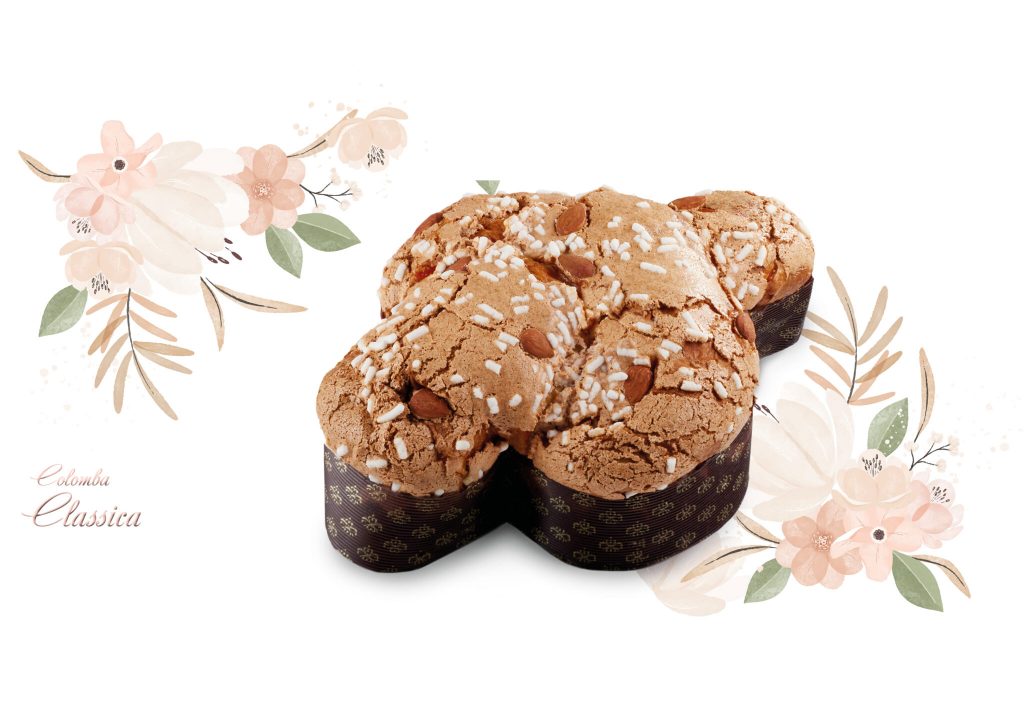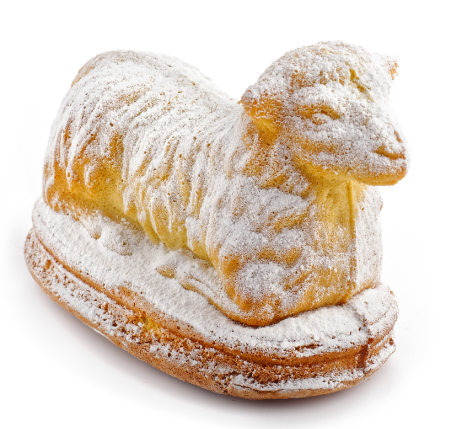ONCE UPON A TIME ...
All articles… Pâques
The egg, the universal symbol of life and renewal, was at the heart of these traditions, and was often offered in its natural form or painted, long before it was turned into sweet treats. The first Easter sweets celebrated the end of the period of Lent: decorated brioche breads, cakes garnished with dried fruits and spices, a sign of the joy of renewal and newfound abundance. Diverse and rich in meaning, these recipes tell the story of the communities, their beliefs and their lands, thus weaving the thread of a gastronomic history that heralds the chocolate celebrations of today.
The diversity of Easter recipes across the globe
Around this celebration, each country, and sometimes each region, presents its own culinary specialities, in particular in terms of sweets.
Italy: The Easter Dove
The Easter Dove, also known as the “Colomba Pasquale”, is a traditional Italian brioche cake with a shape that evokes a dove, the symbol of peace and renewal. With its candied fruits and a sweet crust sprinkled with almonds, this sweet delight is a must for Easter celebrations in Italy.

Spain: The Easter Mona
The Easter Mona is a traditional Spanish brioche, which is often decorated with real hard-boiled eggs before being baked. The egg is traditionally broken over the head of someone at the table, a playful gesture that marks the end of Lent and the beginning of Easter festivities.
England: Hot Cross Buns
In England, Hot Cross Buns are a must. These are sweet buns made with dried fruits and spices and marked with a cross on the top. These pastries are full of symbolism. The cross evokes the crucifixion of Jesus and the spices, the spices that perfume his body.
Russia: Kulich and Paskha
In Russia, Easter is celebrated with Kulich, a rum and saffron cake, and Paskha, a dessert made from fromage blanc. Traditionally, these two sweets are blessed at the Easter mass before being savoured.
Greece: Tsoureki
Tsoureki, a braided brioche bread sprinkled with almond pieces and garnished with hard-boiled eggs coloured red, is a typical Greek Easter sweet. The red eggs symbolise the blood of Christ and the victory of life over death, a powerful image of the resurrection.

Lamala, also known as Easter lamb, is a traditional Alsatian pastry especially baked to celebrate the end of Lent. Its lamb form is a symbol of the renewal and purity associated with the Easter celebration. Made from light, fluffy sponge cake, Lamala is often dusted with icing sugar and sometimes decorated with a ribbon around the neck.
For professional pastry chefs, these traditions offer and inexhaustible source of inspiration.
The arrival of Chocolate in Easter celebrations
Chocolate appeared in Easter celebrations in the 19th century, with improvements in manufacturing methods that allowed the creation of complex forms like chocolate eggs and bunnies. This innovation gradually changed the Easter traditions. Chocolate became a symbol of festivity and gourmet pleasure associated with this period of year.
The creativity of artisans at Easter
With a continually renewed inventiveness, pastry and chocolate artisans are now drawing on a wide range of inspirations to reinvent the Easter traditions. They no longer limit themselves to classic forms and explore innovative concepts, marrying unexpected flavours and audacious designs to seduce and surprise. Each year brings its own creations, reflecting a constant desire to improve and enrich the culinary heritage of Easter. These efforts to innovate and reinvent demonstrate a real respect for the tradition, while brilliantly projecting it into the modern world.
These evolutions illustrate the incredible creativity of the artisans, turning the Easter period into an exceptional moment for artistic expression in pastry and chocolate making, celebrating the renewal in both spiritual and creative aspects.
BRIEFLY
Laurent Le Daniel has just been named a Chevalier dans l’Ordre National du Mérite. Congratulations to him for this prestigious award, which rewards a passionate pastry chef very invested in the sustainability of his profession.
Prepare Valentine’s Day! Take the time to discover the chocolate or fruity sweets offered by our chefs for sale online. By ordering this week you will be delivered on time.
The French team is selected for the Pastry World Cup! She won the European Cup ahead of Italy and the United Kingdom who are also selected for the grand final in January at Sirha.
JOBS
Pâtisserie
La maison Zanin recrute pour son laboratoire de Sallanches un Second pâtissier en CDI – 39h. Toutes les informations ici !
Pâtisserie
La maison Ducobu, en Belgique, recrute sur différents postes. Toutes les informations ici.





